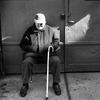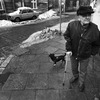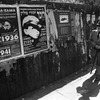The Seven Deadly Sins
An Exhibition at the International Cultural Centre, Cracow, April 7th - May 30th, 2004.
With so many museums and exhibition spaces in Cracow to lure the visitor, it's not surprising that many places slip through the net. One place that is often missed is the International Cultural Centre, and this is a great shame, not only as it plays host to some marvellous one-off events, but also as it's one of the smartest and serenest exhibition spaces in the city. And, unlike some of the hidden gems that are squirelled away in Kazimierz or Podgorze, the Cultural Centre lies right in the heart of Cracow on the main market square, making it a perfect place to drop by for the odd half hour or so.
Until the end of May, the Centre is holding a splendid exhibition of engravings that relate to that inexhaustibly amusing theme, the Seven Deadly Sins. Some one hundred or so pictures have been culled from the collections of Cracow's Academy of Arts and Sciences, taking in works by artists such as the elder Bruegel, Durer, Rembrandt and Hogarth. Sixteenth and seventeenth century works pre-dominate, with a smattering of eighteenth and nineteenth century works balancing things out. The show is a delightful trip through the imaginations of Europe's artists, and it dishes up a feast of works that are rich in humour and eccentricity. Certainly, if ever there was a subject that allowed artists to give free rein to their imaginations, it was the deadly sins.
Up until the nineteenth century, European artists generally had to content themselves with reeling off flattering portraits of the aristocracy, or executing strictly programmatic religious pieces for the Church. They might occasionally be able to stray into the world of classical myth, but even these works were obliged to use clearly defined characters and predictable themes.
However, the Seven Deadly Sins allowed for the creation of all manner of outlandish fiends and fantasies. Pride, Envy, Gluttony, Lust, Wrath, Avarice and Sloth - there was certainly plenty for the artist to get his teeth into. Whatismore, the artist could hardly be accused of indecency, for the grotesqueness of his subjects was all supposed to be a 'warning' of how the terrible sins could corrupt wayward citizens.
Thus one finds in these works all manner of marvellous hellish visions, with plenty of gargantuan fanged monsters, flying fish and strange mutant creatures that seem to be cross-breeds of owls and humans. The dramas tend to unfold against wonderfully fantastical backgrounds - in Bruegel's case it seems to be a sort of Charlie and the Chocolate Factory gone wrong, with miserable sinners being put through a host of wonderfully inventive grinding machines, or being eaten by some of the aforementioned monsters. The consumption of mortals by their vices certainly provided the artist with a netherworld of avenues to explore - the artists clearly relished being able to really let rip, and the engravings are rich in charming and humorous details.
Besides direct interpretations of the Sins themselves, the curator has also woven into the exhibition some works that are more loosely related to the sins. These are amongst some of the most beguiling pieces in the show. Richard Earldom's marvelous 'Usurer's Counting Money' is a real gem, which manages to be both wryly amusing and yet surprisingly affectionate.
A great deal of care and dedication went into creating these works and it's a wonderful privilege to see so many in one go. If you get the chance to drop by the Cultural Centre this Spring its certainly worth it. We can't promise a road to Damascus type conversion against the world of sin, but it's unlikely you'll leave without a smile or two at the very least. Great stuff.

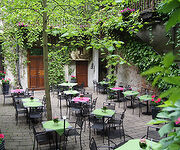 Kawaleria Szarza Smaku
Kawaleria Szarza Smaku
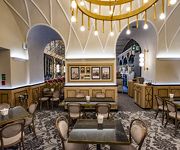 Europejska
Europejska
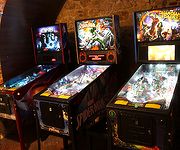 Krakow Pinball Museum
Krakow Pinball Museum



